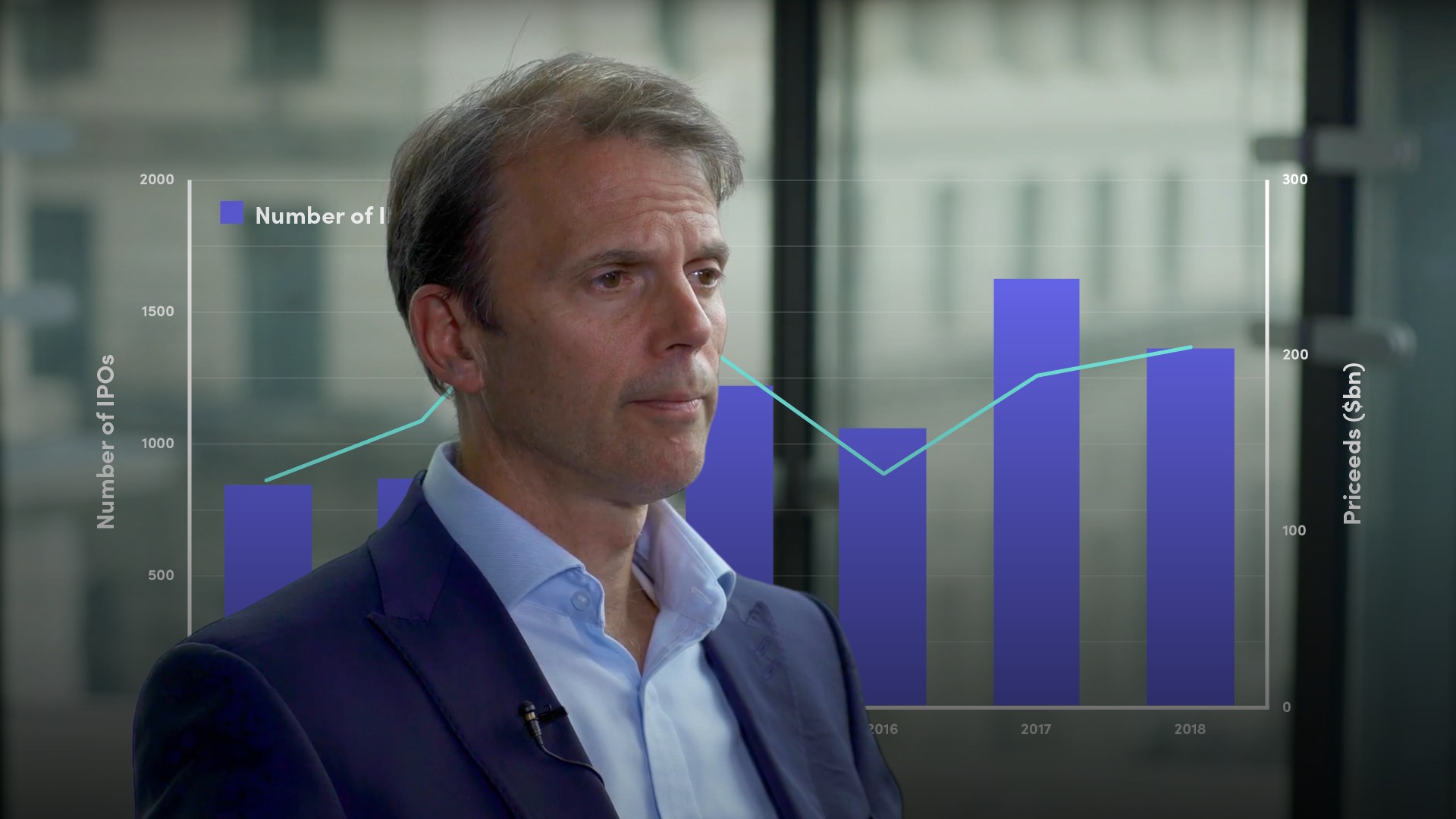
Introduction to IPOs

James Eves
30 years: Equity capital markets
James discusses what an IPO is, why firms issue them and the process of doing so.
James discusses what an IPO is, why firms issue them and the process of doing so.
Subscribe to watch
Access this and all of the content on our platform by signing up for a 7-day free trial.

Introduction to IPOs
13 mins 19 secs
Key learning objectives:
Define an IPO
Explain why IPOs trade up on average
Learn the pros and cons of doing an IPO
Overview:
Many companies choose to “go public” through an Initial Public Offering (IPO) to access a wider pool of capital and to ensure shares are clearly valued and liquid. Although, some companies refrain from an IPO as it is time consuming and expensive, largely due to the ongoing disclosure requirements.
Subscribe to watch
Access this and all of the content on our platform by signing up for a 7-day free trial.
What is an IPO?
An Initial Public Offering or “IPO” is the term used for the first sale of shares sold by a company to the public. After an IPO, a company is referred to as a public company, as shares are sold to the public and are now listed on a regulated stock exchange. The shares sold in an IPO can be new shares issued by the company for the purposes of the IPO, or they can be existing shares held by private shareholders.
Why would a company do an IPO?
Given the huge variety of different companies, sectors and owners there is no one answer to this. However, the following are a number of key factors:
- Access to capital - Creating a public market for shares means you have a broader investor base to access for future equity. At the point of IPO, new shares are often sold, raising capital for growth and development. Having traded shares is also viewed positively as a ‘currency’ to fund acquisitions
- Liquidity - An IPO creates a market for your shares. This helps existing holders to potentially sell shares, or at least see real-time valuation, and allows more investors to buy shares
- Employee incentives - Employees in private companies, especially start-ups, are often partly remunerated with shares in the company. Having an IPO is a key step in allowing them to value, or sell these shares. Also, many companies use employee stock option programs (or ESOPs) as part of their ongoing remuneration
- Improved profile and status - Going public raises a company’s visibility among investors. This not only means equity investors, but it can also help with other investors, like bond funds. The status of achieving a listing, and the required disclosure, can also be helpful with customers and suppliers
What is involved in doing an IPO?
- Requirements - Before starting the process, companies need to review the key requirements for listing on a stock exchange, and may even need to start planning years before an IPO itself
- Prospectus - The IPO prospectus is a lengthy document that goes through at least 3 years of financial information in great detail. The prospectus is designed to provide the public with detailed information about the company, as required by the stock exchange
- Ongoing reporting - there is also an ongoing requirement for periodic financial reporting, major shareholder disclosure and other information for public investors
- Additional regulations - Listing also brings in rules on how to raise new capital going forward, as well as rules around takeovers, share buybacks and disclosure of significant transitions
How is an IPO priced and executed?
While there are different methods of accessing the market for the first time, the most common is done by hiring syndicates of investment banks that market the company’s IPO using an indicative range to collect buy orders from investors. The collection process is commonly referred to as ‘book-building’ which assesses demand. At the same time, senior management of the company typically go on a ‘roadshow’ to see investors.
At the end of this process, the company will review the book of demand with the lead banks and agree on the initial listing price. While it is uncommon for 100% of the shares to be sold, the London Stock Exchange’s main index requires at least 25% of the company to be available after an IPO.
Why do IPOs trade up on average?
One key reason is that IPOs are priced to compensate investors for the risk of putting orders in for a company that has never traded.
Other reasons include encouraging increased trading and ensuring a wide base of owners. Banks may push for low pricing to favour their largest institutional investors.
Why might a company not do an IPO?
- Disclosure - As a share price is the most visible part of a company’s financial profile, this regular disclosure can lead to short-term reactions, which some companies feel detracts from longer-term goals and targets
- Ongoing costs - An IPO means additional ongoing accounting and marketing costs, as well as additional full-time staff in areas like investor relations
- Time commitment - an IPO brings a huge time commitment from senior management in the due diligence, and marketing of the IPO itself
- Extensive information disclosure - Public dissemination of information provides substantial, previously private information, to competitors, suppliers and customers
- Loss of control - New shareholders bring a potential loss of control, mainly through the board of directors, which is required to have a majority of non-executives, who are voted for at each AGM. An IPO does dilute equity ownership and this reduces control and autonomy
How big is the IPO market?
In 2018, there were over 1,300 IPOs globally, raising proceeds of just over $200 billion. While the absolute number was down from 2017, proceeds were up 5%, with several larger tech “unicorns” listing.
Regionally Asia remained the largest with 48% of the value, with the Americas at 29% and Europe 23%, broadly in line with recent precedents, although as recently as 2014 the Americas was the largest IPO market.
By sector, it is perhaps not surprising that the technology sector had the most IPOs, followed by Industrials and Healthcare. These three sectors together represented half of all IPOs.
Subscribe to watch
Access this and all of the content on our platform by signing up for a 7-day free trial.

James Eves
There are no available Videos from "James Eves"



























